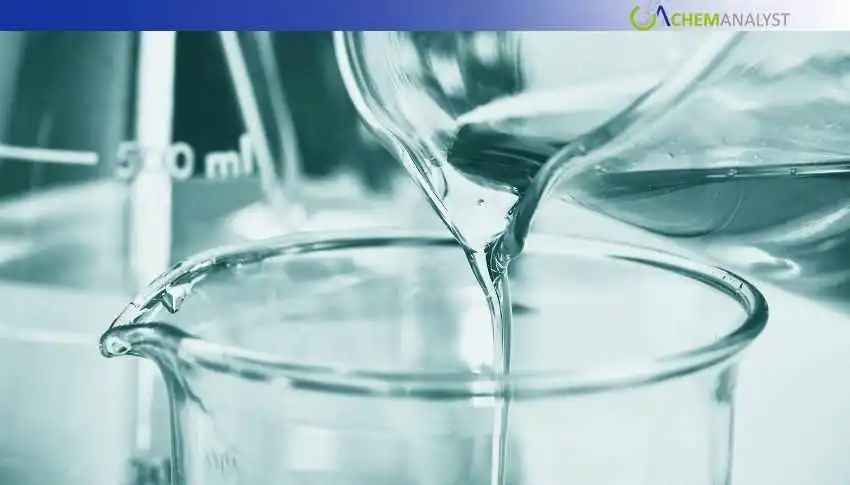Welcome To ChemAnalyst

Epichlorohydrin (ECH) is a reactive, organochlorine compound primarily used in the production of epoxy resins, water treatment chemicals, and synthetic rubbers. Understanding its production—from fossil or bio-based feedstocks to downstream applications—helps manufacturers and regulatory bodies evaluate costs, carbon impacts, safety standards, and technological upgrades across the supply chain.
Introduction
Epichlorohydrin (C3H5ClO) is a volatile, colorless liquid with a chloro-epoxide structure, making it a key building block in polymer chemistry. Traditionally derived from propylene, modern efforts are steering toward bio-based ECH using renewable glycerol.
Understanding its production and use is essential due to:
• Industrial Relevance: 75%+ of global ECH is used to produce epoxy resins used in coatings, adhesives, and wind turbine blades.
• Toxicity & Safety: ECH is a probable human carcinogen (IARC Group 2A), prompting strict handling and emissions regulations.
• Sustainability Push: Bio-ECH reduces reliance on petrochemical propylene and lowers lifecycle emissions by up to 60%.
Overview of the Production Process
ECH can be synthesized through petrochemical or bio-based routes. The traditional process relies on chlorohydrination of propylene, while the bio-based method converts glycerol into ECH via oxidation and cyclization. Common steps include:
1. Chlorination or Oxidation – Formation of intermediates like allyl chloride or dichloropropanol (DCP).
2. Hydrolysis and Cyclization – DCP is treated with alkali to form epichlorohydrin via ring closure.
3. Purification and Distillation – Crude ECH is purified to meet industrial-grade specifications.
4. Storage and Handling – ECH is stored under nitrogen atmosphere in stainless steel tanks to avoid polymerization and moisture absorption.
Raw Materials and Input Requirements
Primary Feedstocks:
• Petrochemical route: Propylene (from FCC or steam cracking)
• Bio-based route: Glycerol (from biodiesel and oleochemical industries)
Key Inputs & Utilities:
• Chlorine – for chlorohydrination.
• Alkali (NaOH/KOH) – for cyclization of DCP to ECH.
• Solvents – e.g., toluene or water for separation stages.
• Catalysts – Transition metal catalysts in some advanced glycerol-based routes.
• Cooling & Heating – Required during exothermic chlorination and distillation.
Product Purity Standards:
• ECH purity ≥ 99.9% (Tech Grade)
• Residual DCP < 0.01%
• Water content < 500 ppm
Major Production Routes
1. ECH Production by Petrochemical Processing
2. ECH Production by Bio-Processing
Regional Highlights:
• Asia-Pacific: China is the largest ECH producer, using both propylene and glycerol routes.
• Europe: Belgium and Germany are scaling Bio-ECH to meet REACH compliance.
• India: Currently dependent on imports; new capacity based on the propylene route expected.
• USA: Uses both routes; strong domestic epoxy resin demand drives ECH consumption.
Equipment and Technology Used
Core Reaction Units:
• Chlorohydrination Reactors – Glass-lined or titanium-lined vessels to resist corrosive chlorine.
• Alkaline Reactors – For conversion of DCP to ECH.
• Scrubbers – For HCl and unreacted chlorine removal.
Separation & Purification:
• Distillation Columns – Fractionate crude ECH.
• Decanters and Phase Splitters – Remove aqueous phase.
• Absorbers and Desorbers – For gas treatment and solvent recovery.
Automation & Control:
• DCS/SCADA Systems – For batch/continuous production monitoring.
• Explosion-proof sensors and controls – Given the flammable and reactive nature of ECH.
Environmental and Safety Considerations
Emissions and Hazards:
• ECH is toxic by inhalation and skin contact (GHS Acute Tox Category 3) and is classified as a probable human carcinogen.
• VOC emissions must be minimized using condensers, incinerators, or activated carbon filters.
Waste Streams:
• Chlorinated brine and spent alkali must be treated in effluent treatment plants (ETP).
• Off-gas scrubbers neutralize residual chlorine and HCl before venting.
Storage Safety:
• ECH is stored in explosion-proof, nitrogen-blanketed tanks.
• Ethyl mercaptan or similar odorants may be added for leak detection.
• Requires PPE, eye showers, ventilation, and chemical-resistant materials.
Regulations:
• REACH (EU) – Requires registration, exposure scenario documentation, and safety assessments.
• OSHA 29 CFR 1910.119 – Process safety management for ECH in the U.S.
• GHS/CLP – Labels ECH as flammable, toxic, and dangerous to aquatic life.
Conclusion and Future Innovations
Epichlorohydrin is evolving from a petrochemical intermediate to a biobased specialty chemical aligned with global decarbonization targets.
Key Trends and Innovations:
• Bio-ECH Expansion: Solvay, Dow, and Spolchemie are investing in glycerol-to-ECH plants with capacities of 50,000+ TPA.
• Catalyst Optimization: Solid catalysts and membrane reactors are reducing energy consumption and chlorinated waste.
• Circular Chemistry: Pilot projects are exploring plastic waste to ECH via pyrolysis-gasification routes.
• Digital Safety Tools: AI-integrated monitoring systems enhance hazard prediction and response time.
As epoxy resins find growing use in renewables (wind blades, EV batteries), sustainable ECH production will be vital to achieving circular, low-toxicity supply chains.
We use cookies to deliver the best possible experience on our website. To learn more, visit our Privacy Policy. By continuing to use this site or by closing this box, you consent to our use of cookies. More info.
